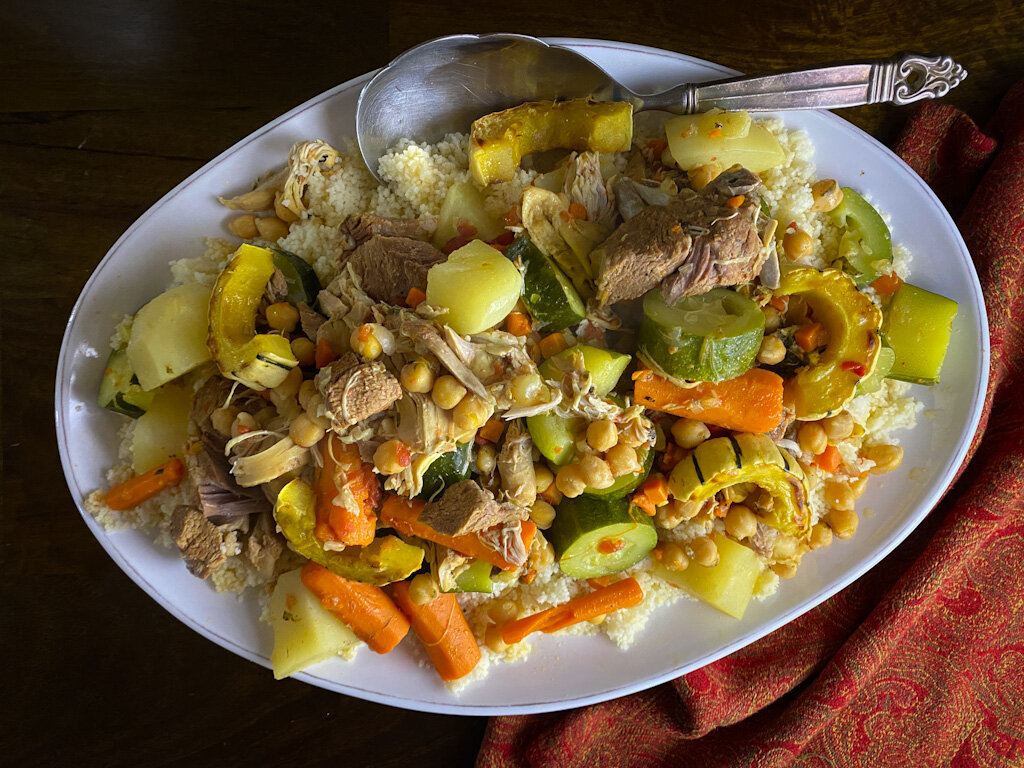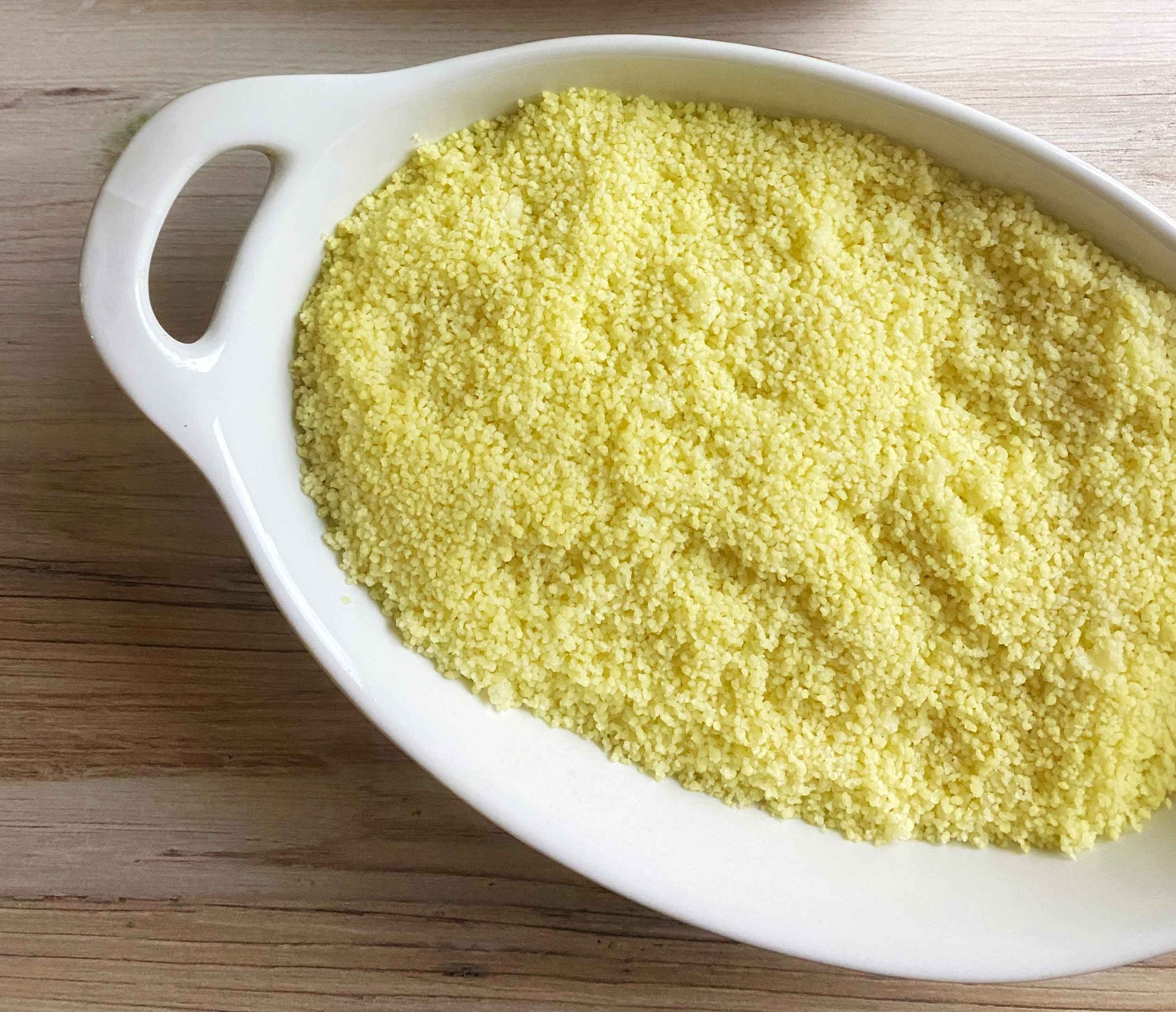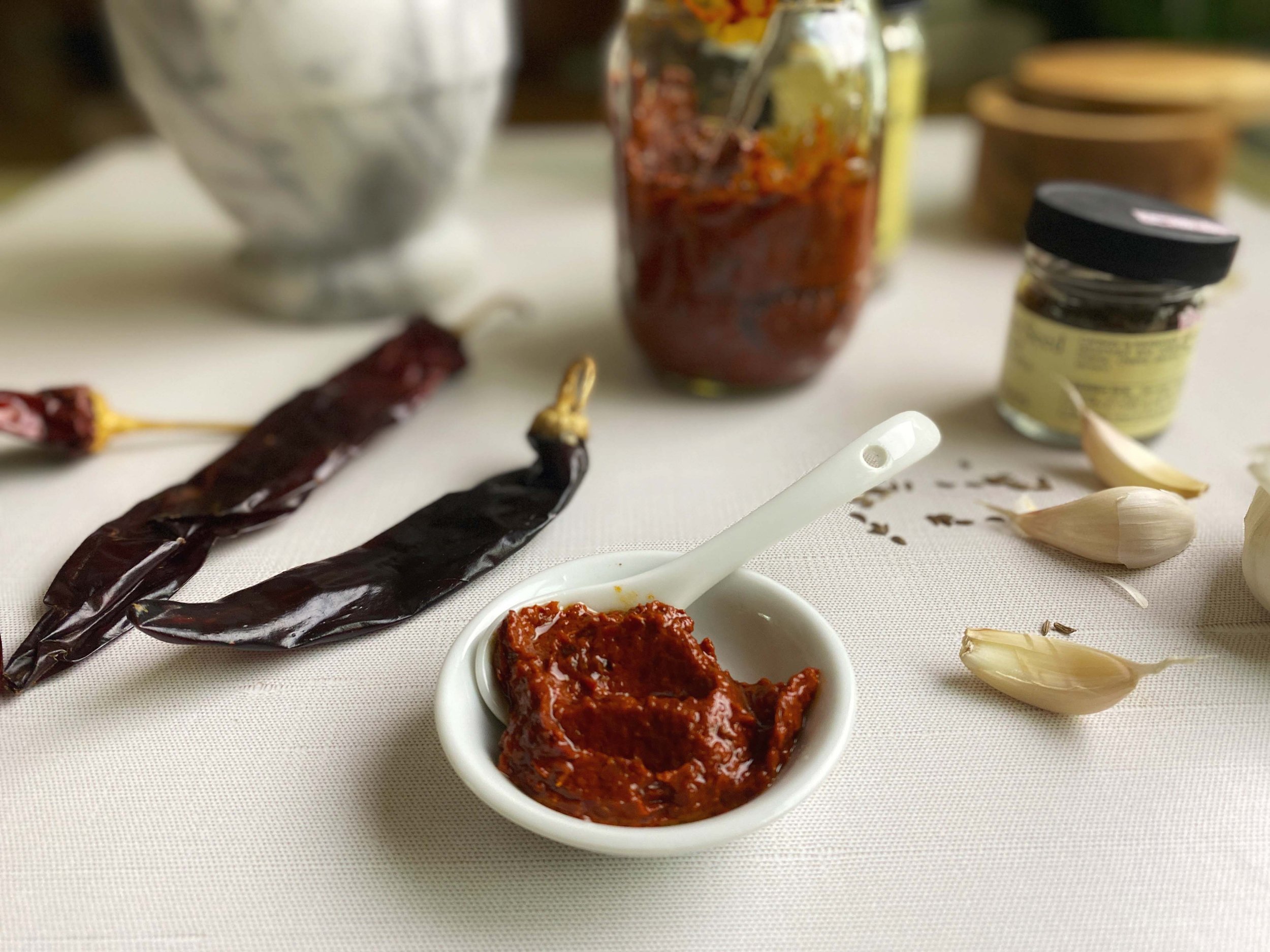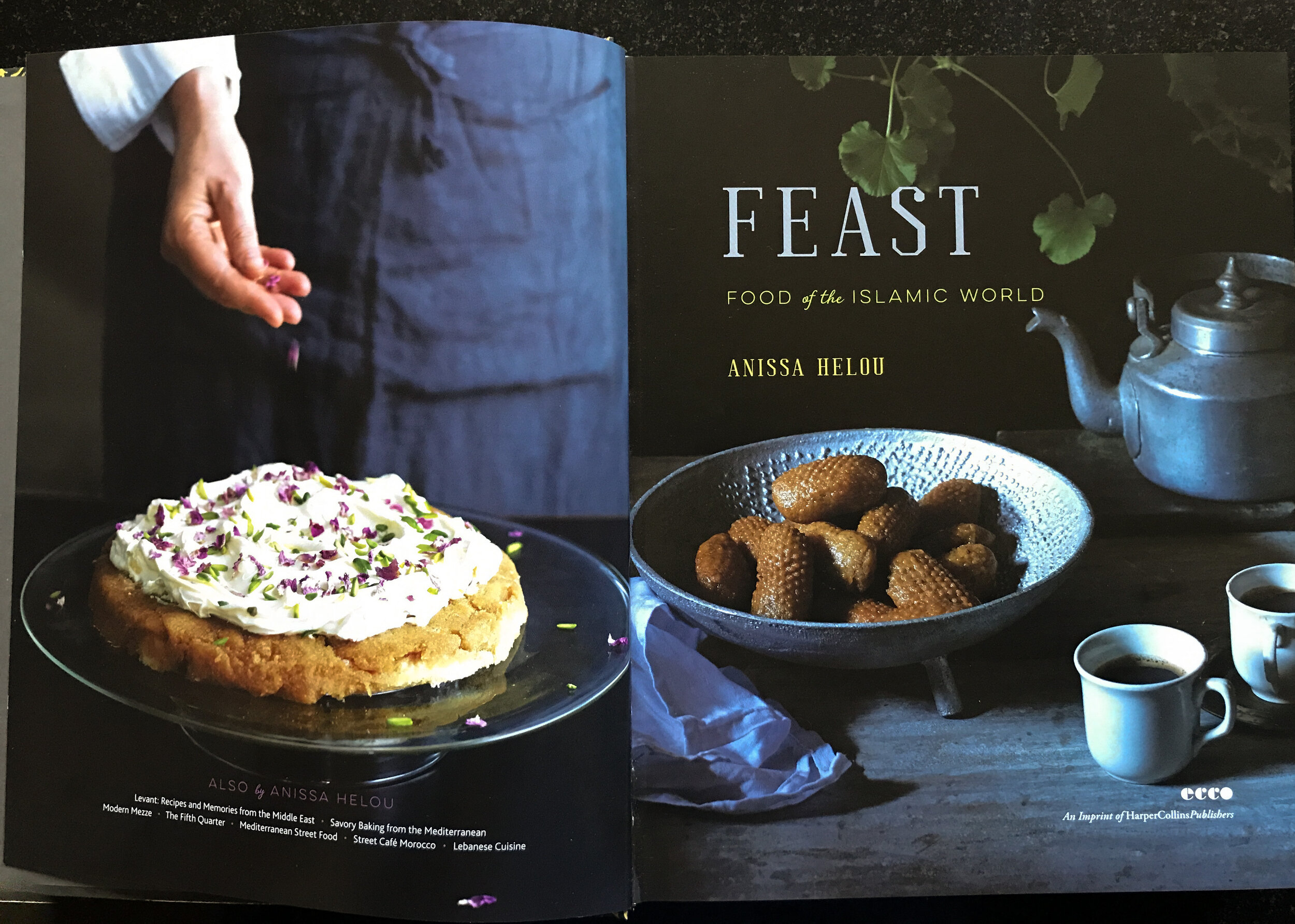By Leslie Brenner
To lots of people, couscous is something you buy in a box, add to a pan of boiling water, stir, let sit 5 minutes then fluff with fork. Maybe they’ll zhuzzh it up a bit and call it a side dish.
But couscous can be so much more — as it is in its birthplace, the Maghreb subregion of North Africa.
In countries like Tunisia, Algeria and Morocco, couscous is both “grains” of rolled semolina like the ones that come in that box, and a savory meat-and-vegetable stew that’s spooned on top of the grains.
More accurately, those grains are granules. Made from crushed durum wheat (semolina), they are related to pasta, but they’re not exactly pasta. Traditionally they’re made by mixing the durum with water, and rubbing the mixture between your palms into granules. The granules are put through a sieve, and anything small enough to go through has to be rubbed again. It’s very labor-intensive. The granules are then steamed, then dried in the sun.
That’s just the beginning: To serve couscous, it has to be cooked — which involves steaming it several times (traditionally in a dedicated couscous steamer, known as a couscoussier), and spreading it out and rubbing it to separate the granules in-between steamings. After the last steaming, it’s super light and fluffy: the couscous ideal. (Properly prepared couscous is never clumpy or gummy.)
To say couscous is culturally important in the Maghreb is an understatement. “Couscous is considered the most important traditional dish among the Maghreb people,” wrote Oumelkheir Soulimani in a 2020 article in the African Journal of Food, Agriculture, Nutrition and Development.
The food historian Charles Perry (my former colleague at the Los Angeles Times), wrote about couscous for the Oxford Symposium on Food and Cookery in 1989. His paper, “Couscous and its Cousins,” points out that in Morocco and Algeria, “the local word for it is sometimes identical to the word for ‘food’ in general.” He concludes that it was the Berbers of northern Algeria and Morocco who first created couscous, sometime between the 11th and 13th centuries.
So the tradition is very old.
(Of course there’s also the pearl couscous that’s popular throughout the Levant — in Lebanon, Israel, Jordan and Syria. Those much-larger granules are produced in a similar way, but the aesthetic is very different. That’s another story.)
How is what you buy in the box different than scratch-made semolina rolled between the palms? Soulimani explains that in detail — basically, it’s similar to the artisanal product up to the point where it’s dried.
When you follow the simple instructions on the box, you’re skipping the whole steaming routine that traditionally follows. The couscous tastes fine, but it’s much heavier than the ideal; a box of couscous steamed three times makes twice the volume of one made according to package instructions. And it sits heavy in your belly. That’s why until recently, if I wanted to do couscous right, I’d set up a steamer (I don’t own a couscoussier — pronounced coose-coose-ee-YAY) and spend a couple hours preparing the granules. No, you don’t have to do that to make a great couscous; more on that presently.
Either way, you’re using industrial couscous from the box (or bag, or whatever) — unless, of course, you happen to be in possession of some hand-rolled, sun-dried couscous.
The topper: a festive stew
The stews that go on top are wide-ranging: They can involve lamb, chicken, fish or vegetables, or a combination. Often there’s a sweet element — raisins or caramelized onions, pumpkin or sweet potato; sometimes chicken is brushed with honey. There’s usually cinnamon and saffron, and harissa — which may also be served on the side. Traditionally, fresh country butter (smen or oudi) may be included.
READ: How to make your own Tunisian-style harissa — and why you’ll be thrilled you did.
Since I was a wee twenty-something, I’ve been making a festive rendition inspired by a traditional Moroccan dish: couscous with seven vegetables, in the style of Fes. The seven vegetables are a Berber tradition; they include zucchini, turnips, carrots, tomatoes, sweet potatoes, cabbage and pumpkin. The Fes-style couscous also includes chickpeas, raisins and onions, along with chicken and lamb, cilantro, cinnamon, saffron, harissa. The grains get tossed in a lot of butter.
My couscous includes all of the above except for raisins, cabbage and sweet potato; instead of pumpkin, I use delicata squash because it’s easier and (to me) more delicious. I skip the butter on the couscous — I find it’s rich enough without it, as the broth is rich.
Why do I skip some of the vegetables? Only because I first learned to make the dish from a cookbook in the Time-Life “The Good Cook” series. A method more than a recipe (as was the habit in those excellent books), it gave a basic outline — which worked great. Over the years, I’ve evolved it a bit.
Putting it all together
The basic idea is make a broth with cut-up lamb and chicken; chickpeas are included from the start if you’re using dried ones, or toward the end of you’re using canned (either is fine). The broth is flavored with harissa, cinnamon, cilantro, tomato and diced carrots and onion; big chunks of carrot and turnip are added later, followed by zucchini and roasted red pepper strips. Once everything is tender and delicious (what a gorgeous aroma!) and your fluffy couscous is ready, you put the granules on a platter and lay the meats, chickpeas and veg on top, along with roasted delicata squash rounds. Moisten it all with a little broth, and bring it to the table, along with a sauceboat of broth and a dish of harissa.
Recently, a brilliant solution surfaced for the age-old couscous granule quandary of whether to spend hours steaming and rubbing, or take the 5-minute box-instructions shortcut. In her recent cookbook Claudia Roden’s Mediterranean, the renowned author devised a quick-and-easy method that’s a hundred times better than the box-instructions. (Basically, pour on boiling water, stir, wait five minutes, stir again, wait five minute, drizzle on a little olive oil, then rub the grains between your hands to separate the granules and coat with oil. Cover with foil and bake 10 or 15 minutes. Fantastic!)
One day (maybe soon!) I’ll make a proper couscous with seven vegetables in the manner of Fes. And I did get my hands on hand-rolled, sun-dried couscous from Tunisia; Zingerman’s sells it. I, however, have not yet been able to get satisfactory results cooking it according to package directions or using Roden’s method. I’m going to continue working with the product, and if I succeed, that’ll be another story, too.
For now, I invite you to enjoy a couscous that’s always been a favorite among my friends and family — using the familiar couscous in a box and incorporating Roden’s clever hack. Want to make it super-special? Take the time to make homemade harissa. But even if you use harissa from a tube, I think you’ll love this.

























